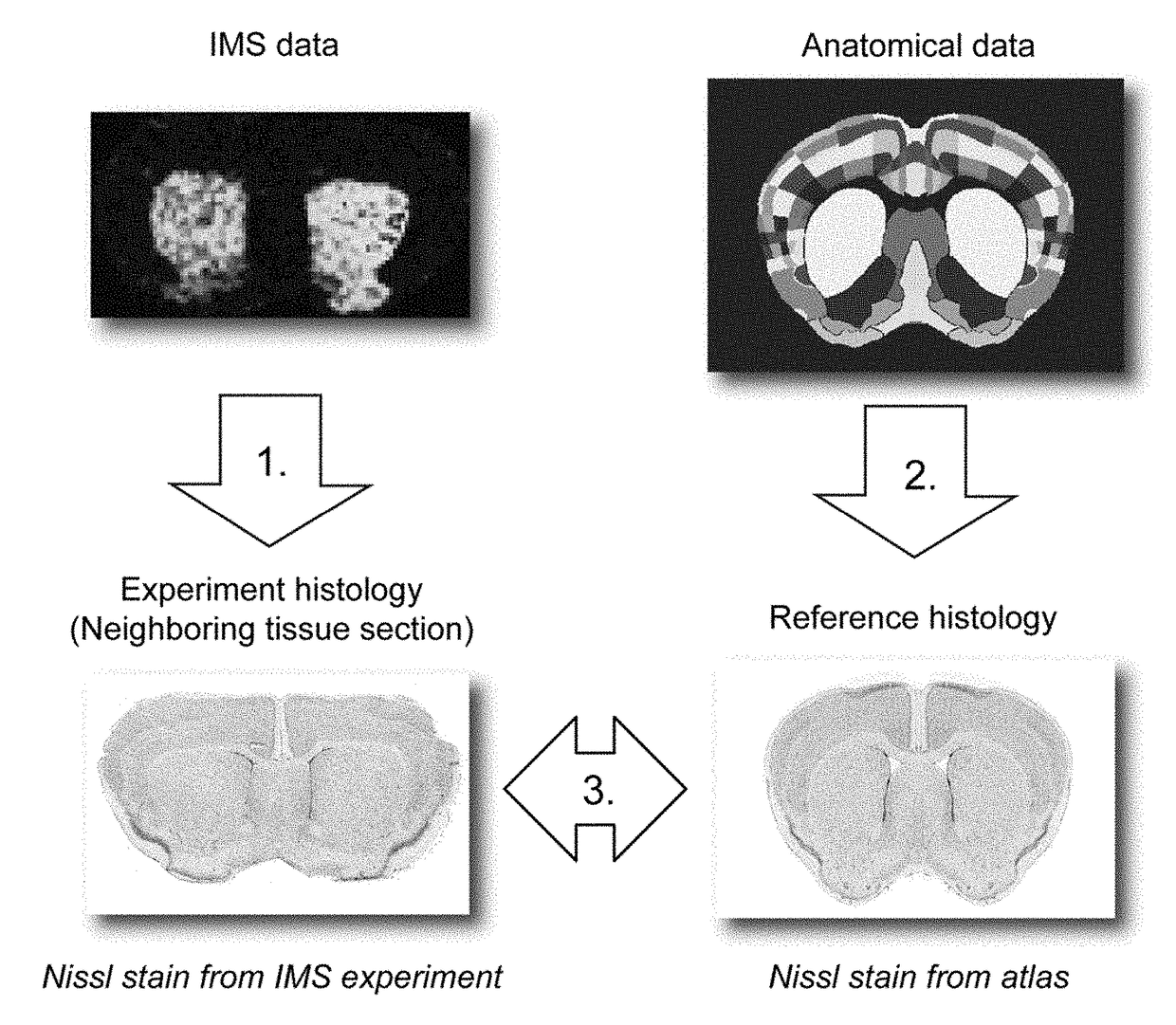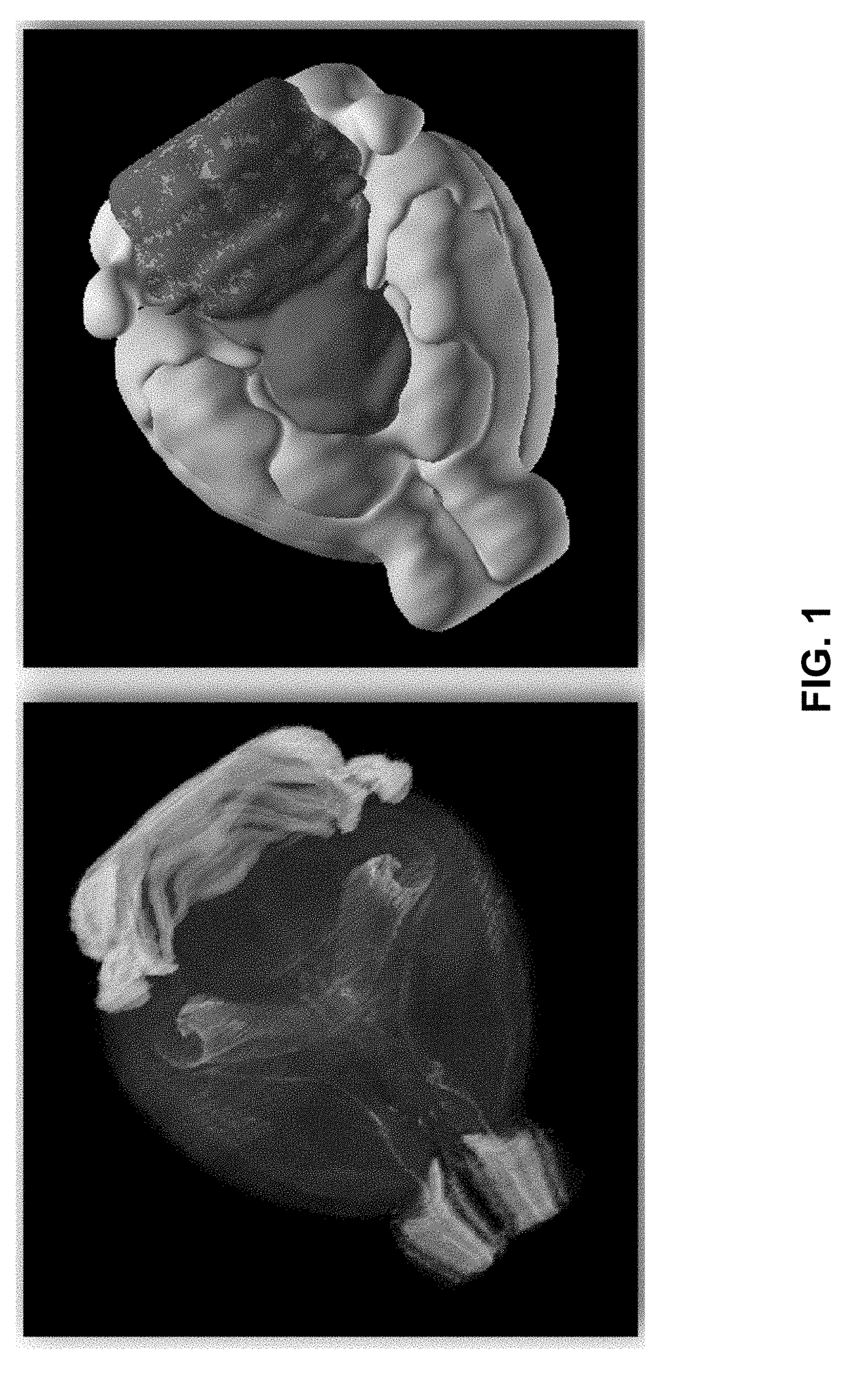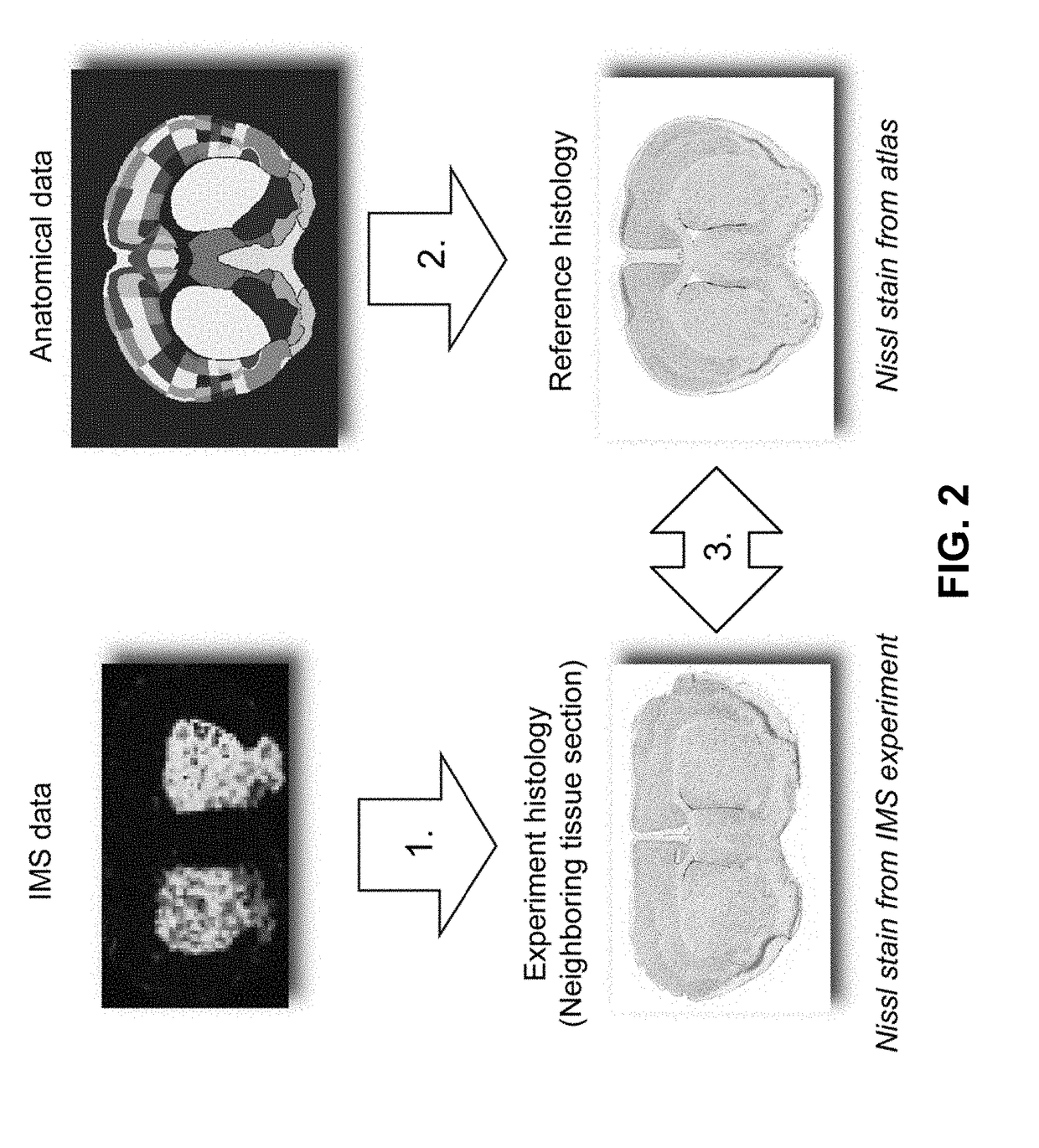System for interpretation of image patterns in terms of anatomical or curated patterns
a technology of image patterns and anatomical patterns, applied in image enhancement, instruments, image data processing, etc., can solve the problems of human bias in the analysis, difficult interpretation and analysis, etc., and achieve the effect of reducing the chance of human bias skewing the analysis, reducing the cost and time of interpretation, and increasing the reproducibility of the analysis
- Summary
- Abstract
- Description
- Claims
- Application Information
AI Technical Summary
Benefits of technology
Problems solved by technology
Method used
Image
Examples
examples
[0132]Since a substantial amount of IMS research focuses on rodent brain (K. Sköld, M. Svensson, A. Nilsson, X. Zhang, K. Nydahl, R. M. Caprioli, P. Svenningsson, and P. E. J. Andrén, Proteome Res. 2006, 5:262-269), the case studies herein use MALDI-TOF IMS data from mouse brain tissue as the empirical data source and the Allen Mouse Brain Atlas (E. S. Lein, M. J. Hawrylycz, N. Ao, M. Ayres, A. Bensinger, A. Bernard, A. F. Boe, M. S. Boguski, K. S. Brockway, E. J. Byrnes, and L. Chen, et al., Nature 2007, 445:168-176) as the curated anatomical data source. Both data types have been used in studies of neurodegenerative diseases such as Alzheimer's, Parkinson's, and healthy mouse brain (A. R. Jones, C. C. Overly, and S. M. Sunkin, Nat. Rev. Neurosci. 2009, 10:821-828; and J. Hanrieder, N. T. N. Phan, M. E. Kurczy, and A. G. Ewing, ACS Chem. Neurosci. 2013, 4:666-79). However, the methods developed herein are not specific to these case studies, a particular species, disease model, or a...
case study examples
Lipid Case Study Examples
[0190]FIG. 13 shows the correlation table for the lipid data (negative mode) with the atlas data. It shows areas of high positive, high negative, and low correlation. FIG. 14 displays several examples of anatomical structure / ion abundance combinations with high positive correlation.
Additional Automated Anatomical Interpretation Examples
[0191]Examples of automated anatomical interpretation applied to the protein-focused IMS case study are demonstrated in FIGS. 15A and 15B. When an ion image is given as input (top-left), the interpretation method provides an optimal anatomical explanation for the observed ion pattern (bottom), using the library of provided anatomical structures. Specifically, the ion intensity pattern is decomposed without user intervention into an optimal combination of contributing anatomical structures from the atlas. The interpretation method provides (i) the closest approximation of the measured ion image using atlas structures (top-middl...
PUM
 Login to View More
Login to View More Abstract
Description
Claims
Application Information
 Login to View More
Login to View More - R&D
- Intellectual Property
- Life Sciences
- Materials
- Tech Scout
- Unparalleled Data Quality
- Higher Quality Content
- 60% Fewer Hallucinations
Browse by: Latest US Patents, China's latest patents, Technical Efficacy Thesaurus, Application Domain, Technology Topic, Popular Technical Reports.
© 2025 PatSnap. All rights reserved.Legal|Privacy policy|Modern Slavery Act Transparency Statement|Sitemap|About US| Contact US: help@patsnap.com



